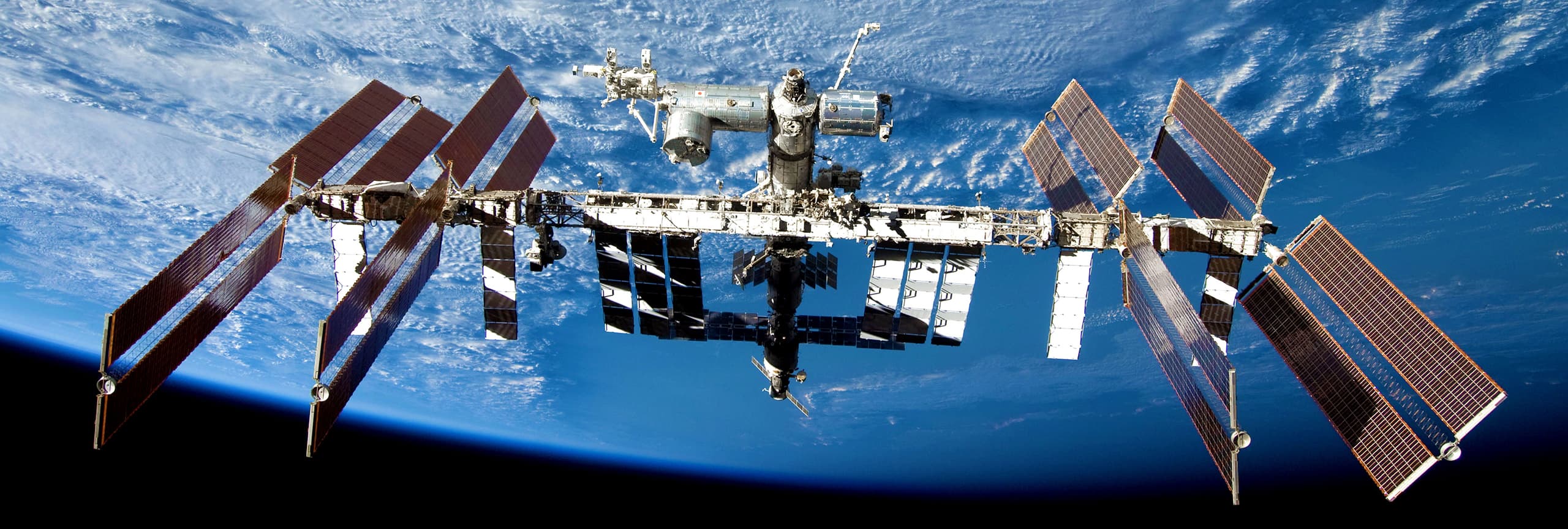Space Stations
Reading Time: minute
Audiobook: Not available for this chapter

What is a space station, really?
Space stations are structures designed to orbit the Earth and provide a habitable space environment for astronauts to live and work in for extended periods of time. These stations are constructed using a variety of materials and components, including metal alloys, composites, and specialized fabrics.
One of the key challenges in building space stations is the need for them to be able to withstand the harsh environment of space, including extreme temperatures, radiation, and micrometeoroids. To address these challenges, space station modules are typically built with layers of insulation and protective coatings, as well as reinforced structural components.
The International Space Station (ISS), for example, is made up of a series of interconnected modules, each of which is built using a combination of aluminum and titanium alloys, as well as reinforced carbon composite materials. These modules are designed to be able to withstand the rigors of space, while also providing a safe and comfortable environment for astronauts.
In addition to structural components, space stations also rely on a variety of specialized systems and equipment to support life in space. These can include life support systems, such as air purification and water recycling systems, as well as power generation and communication systems.
As you might have guessed by now, they also cost an absolute shit ton of money.
History of space stations
The first space station was launched by the Soviet Union in 1971, called Salyut 1. It was designed as a research platform for experiments in physics, biology, and space medicine. However, it only lasted a few months before it malfunctioned and fell back to Earth (lmfao).
The next space station to be launched was the American Skylab in 1973, which was also used for scientific research, as well as for testing new space technologies. Despite its success, Skylab was short-lived, lasting only six years before it burned up upon re-entry into the Earth's atmosphere.
Fast forward to the present day, and we have several operational space stations in orbit around the Earth. The most famous of these is the International Space Station (ISS), which has been continuously occupied since the year 2000. The ISS is a collaboration between five space agencies: NASA, Roscosmos (Russia), ESA (Europe), JAXA (Japan), and CSA (Canada). It is currently the largest artificial satellite in orbit, weighing in at over 400 tons.
Future space stations
Since, in case you haven't heard it yet, the ISS is going to be discontinued by 2030, is there any future plans for a new space station? Would be a shame if not, right? Well, worry not, there is!
NASA, the European Space Agency (ESA), the Japan Aerospace Exploration Agency (JAXA), and the Canadian Space Agency (CSA) are all working together to build a new space station that will orbit the Moon, called the Lunar Gateway. This space station is an important part of NASA's Artemis program, which aims to send humans back to the Moon by 2024.
To put it in NASA's words: The Gateway, a vital component of NASA’s Artemis program, will serve as a multi-purpose outpost orbiting the Moon that provides essential support for long-term human return to the lunar surface and serves as a staging points for deep space exploration. It will be located in orbit around the Moon, in what is known as a "near-rectilinear halo orbit," which will allow for easy access to the lunar surface.

The Lunar Gateway will be made up of several modules, including a power and propulsion module, a habitation module, and modules for scientific research and technology development. The power and propulsion module will be the backbone of the Lunar Gateway, providing propulsion and energy to the entire station. It will also serve as a communication hub, allowing for real-time communication between the Lunar Gateway and Earth.
The habitation module will provide living quarters for the crew, including sleeping quarters, a kitchen, and a bathroom. It will also have a medical bay and exercise equipment, to help the crew stay healthy during their long-duration missions. The scientific research module will provide a laboratory for conducting experiments in fields like biology, physics, and materials science. The technology development module will be used for testing new technologies, such as new spacesuits and communication systems.
One of the key goals of the Lunar Gateway is to establish a sustainable presence on the Moon, which will require developing new technologies and systems for living and working in space. The Lunar Gateway will serve as a testbed for these technologies, allowing researchers and engineers to develop and refine them in a real-world space environment.
Now that we've gotten all the aerospace engineering core fundamentals down, let's jump to the point where we actually travel to another planet.
Additional Resources
- Additional info about NASA's Lunar Gateway can be found on NASA's portal for it.